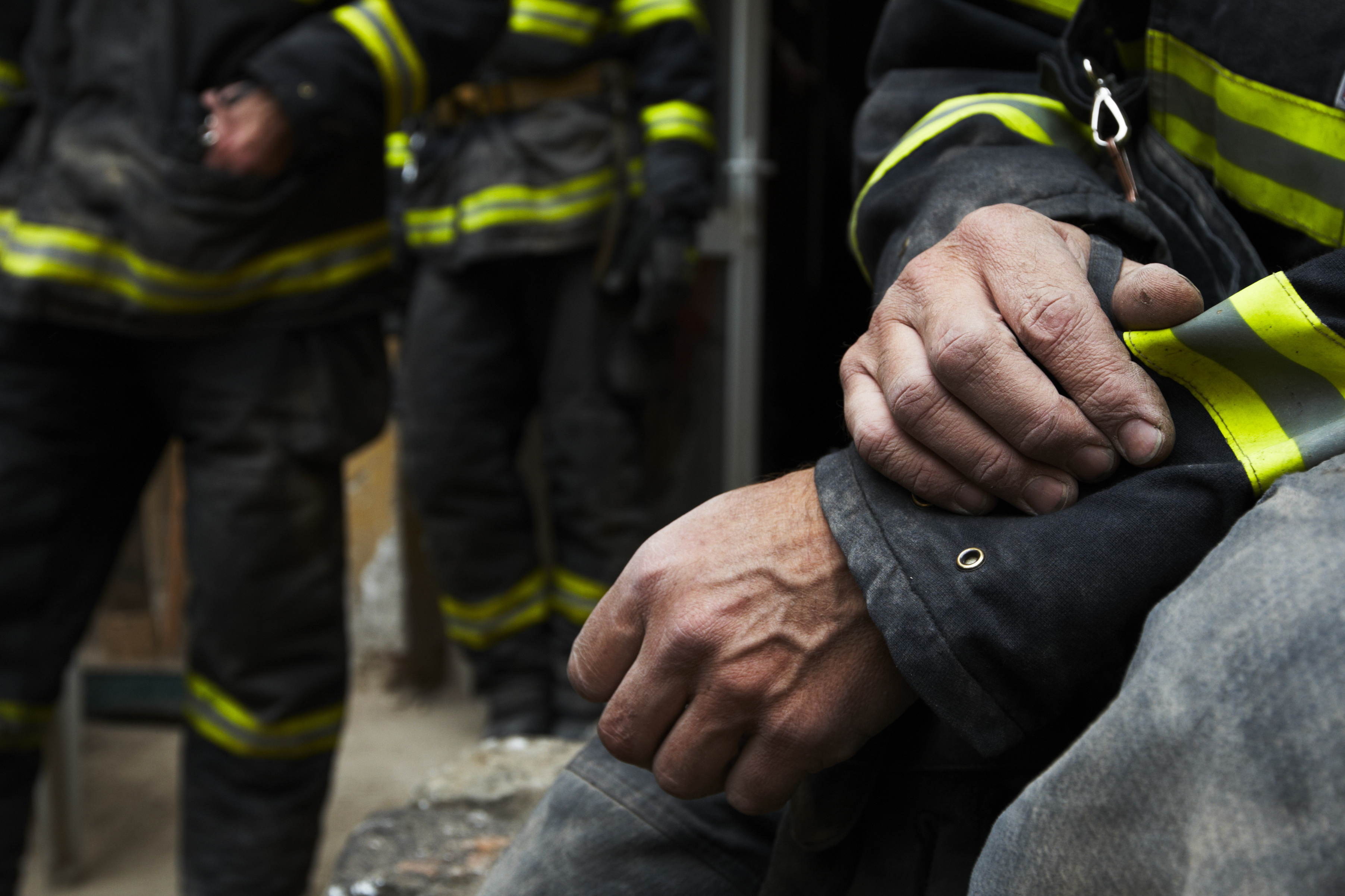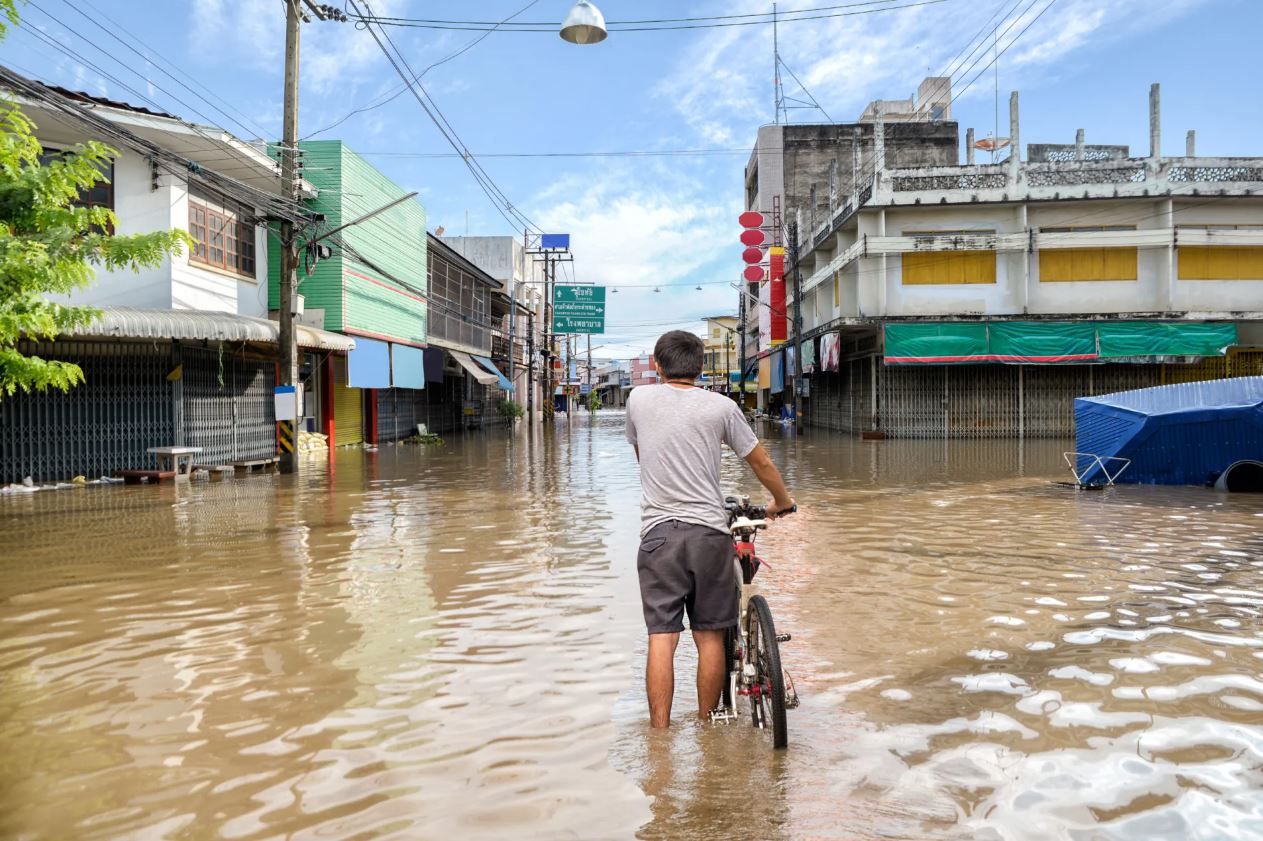
In times of crisis, when communities are devastated by disasters, disaster service workers emerge as unsung heroes, working relentlessly behind the scenes to restore order and provide crucial aid. These dedicated individuals play an indispensable role in the aftermath of natural disasters, pandemics, and other large-scale emergencies. Although their efforts often go unnoticed amid the chaos, disaster service workers are the backbone of recovery and resilience. From offering emergency care to rebuilding communities, they are essential for ensuring swift and effective responses.
Disaster service workers include both paid and volunteer personnel who contribute to emergency response efforts. This diverse group encompasses first responders such as paramedics, firefighters, and police officers, as well as those providing logistical support, mental health counseling, and community assistance. Nonprofit organizations like the Red Cross and local volunteers also play a critical role by offering shelter, food, and medical services. Together, these disaster service workers form a dedicated team that coordinates efforts to help communities recover from devastation.
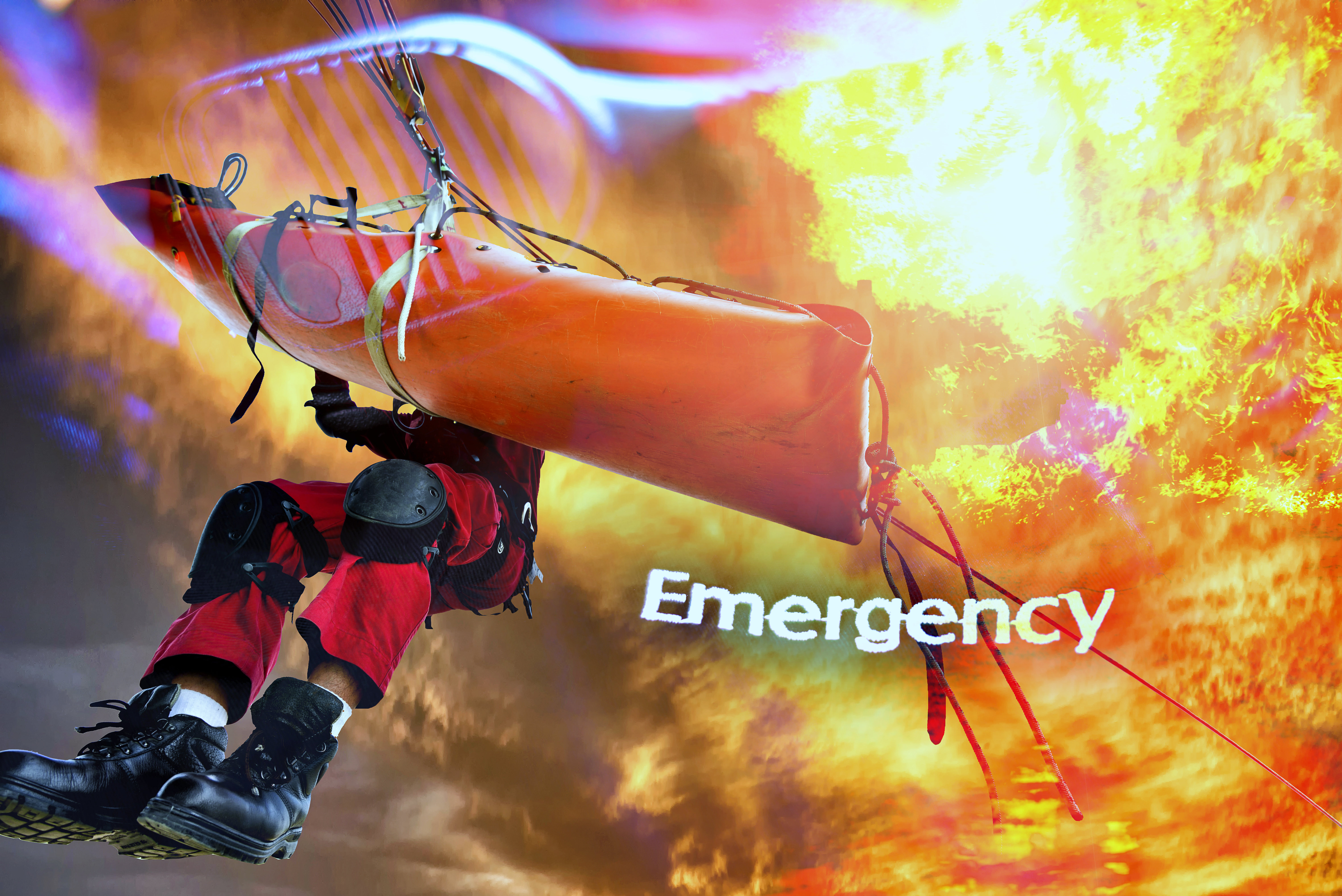
The success of disaster service workers in crisis response largely depends on effective communication. Clear, timely, and accurate communication is key for coordinating actions, ensuring safety, and delivering life-saving information to the public. By understanding how disaster service workers operate within these scenarios, we can better appreciate the vital role that communication plays in their ability to save lives and restore normalcy. Disaster service workers are not only on the front lines but also working behind the scenes to help communities rebuild, making their role in disaster recovery indispensable.
Who are Disaster Service Workers?
In times of crisis, when disasters strike and devastate communities, disaster service workers are the dedicated individuals who work tirelessly to restore order and provide essential assistance. These workers are crucial in both the immediate response and the long-term recovery of affected areas. Operating behind the scenes, disaster service workers are found across various professions, from first responders to public health personnel, and work across government levels and volunteer organizations. They are a diverse, committed group dedicated to supporting the public during the most trying times.
Types of Disaster Service Workers
Emergency Medical Personnel, Firefighters, Police, and More Disaster service workers often include first responders who are the first to arrive at the scene of a crisis. Their role is vital in stabilizing the situation, providing life-saving medical care, and rescuing individuals from immediate danger.
Emergency Medical Personnel: Paramedics, EMTs, and emergency medical technicians are crucial for providing immediate medical care, performing triage, and transporting injured individuals to hospitals. Their role is essential in preventing fatalities and stabilizing victims during chaotic moments.
Firefighters: Firefighters work to extinguish fires, rescue victims trapped in collapsed buildings, and manage hazardous materials. They are key to reducing further damage and protecting public safety.
Police Officers: Law enforcement officers maintain public safety during a disaster. They assist with evacuations, enforce curfews, and prevent civil unrest while securing routes for rescue operations.
Nonprofit and Volunteer Organizations: Red Cross, Local Volunteers, Faith-Based Groups Disaster service workers also include nonprofit organizations and volunteers, who are integral to the disaster response.
The American Red Cross: A leading organization in disaster relief, the American Red Cross provides shelters, food, and supplies while offering long-term recovery assistance.
Local Volunteers: Community members often respond first to disasters, helping distribute supplies, assist in cleanup, and provide immediate relief. Their local knowledge makes them invaluable during crises.
Faith-Based Organizations: Religious groups play a vital role by providing food, shelter, counseling, and emotional support to those affected by disasters.
Government and Local Agencies: FEMA, State Emergency Response Teams, Local Employees Disaster service workers in government agencies ensure large-scale responses and resource deployment.
Federal Emergency Management Agency (FEMA): FEMA coordinates federal resources, provides financial assistance, and supports first responders in disaster zones.
State Emergency Response Teams: These teams coordinate response efforts within states, assessing needs and deploying resources alongside federal agencies like FEMA.
Local Government Employees: Local governments respond quickly to disasters, managing evacuations, restoring infrastructure, and addressing immediate community needs.
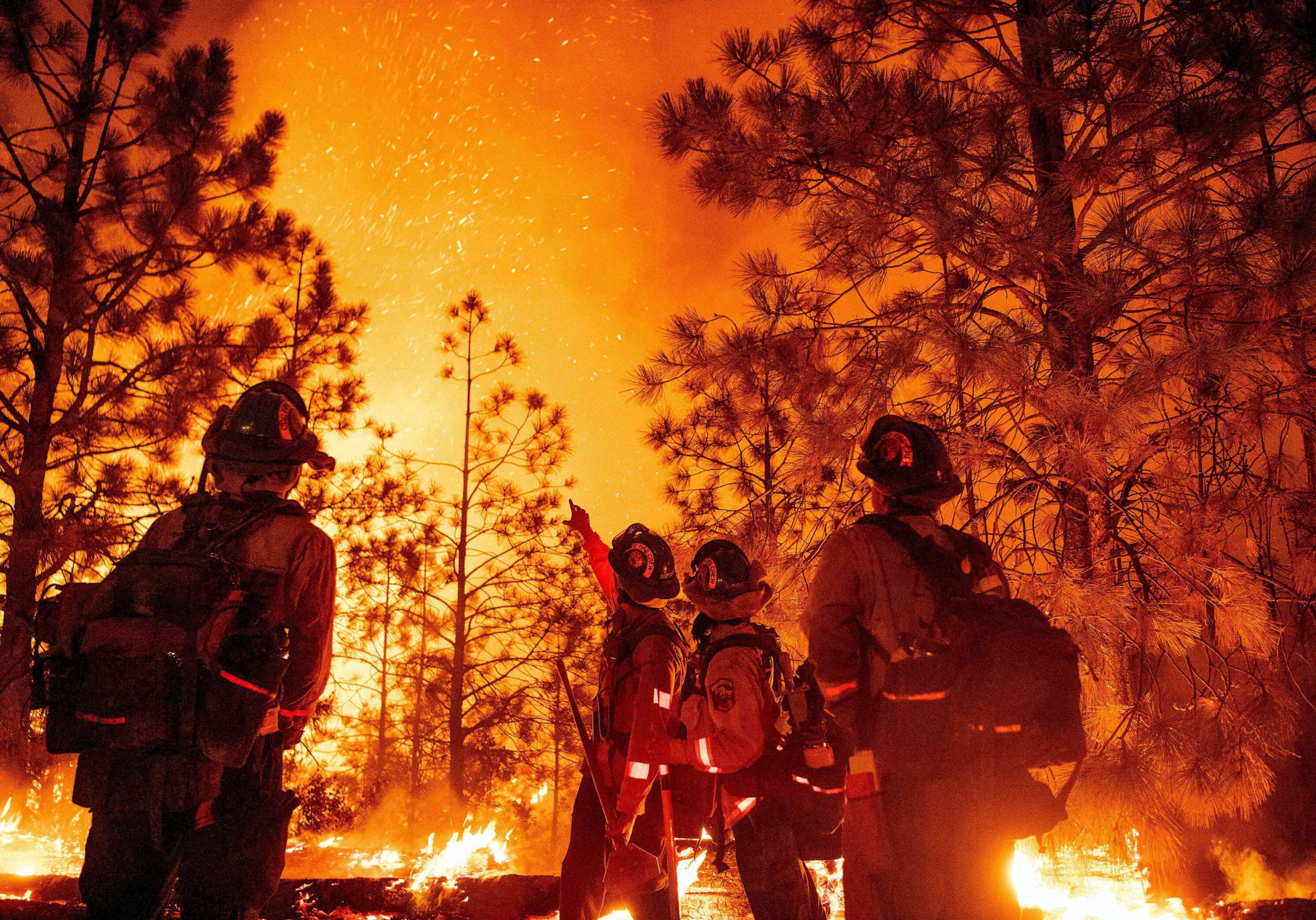
Community and Public Health Workers: Public Health Nurses, Mental Health Counselors, Social Workers Disasters also take a psychological toll, which is why disaster service workers in the public health sector are essential in offering mental health support.
Public Health Nurses: These professionals prevent disease outbreaks, administer immunizations, and help maintain health standards in shelters, supporting overall public health.
Mental Health Counselors: Crisis counseling services provide emotional support to survivors coping with trauma, loss, and stress in the aftermath of disasters.
Social Workers: Social workers assist disaster survivors by connecting them with resources like housing and food, guiding them through government aid processes and offering emotional support.


Role of Disaster Service Workers
Disaster service workers play a critical role at every stage of a disaster:
- Immediate Response: In the first hours after a disaster, disaster service workers focus on search and rescue, medical care, evacuation, and providing shelter and food to those in need.
- Recovery and Rebuilding: After the immediate danger has passed, disaster service workers help restore infrastructure and services, ensuring long-term recovery and rebuilding efforts.
-
Psychological Support: Crisis counselors and mental health professionals help survivors deal with the emotional and psychological effects of a disaster, offering invaluable support during recovery.
Challenges Faced by Disaster Service Workers
Disaster service workers face significant challenges, including:
- Physical and Emotional Toll: The demands of the job can lead to exhaustion, stress, and exposure to traumatic scenes.
- Resource and Coordination Shortages: In chaotic disaster situations, limited resources and difficulty coordinating between agencies can impede relief efforts.
- Communication Breakdowns: Fragmented communication between agencies can cause delays in aid and hinder efficient use of resources.
Despite these challenges, disaster service workers continue to display resilience and dedication, ensuring that affected communities receive the help they need.
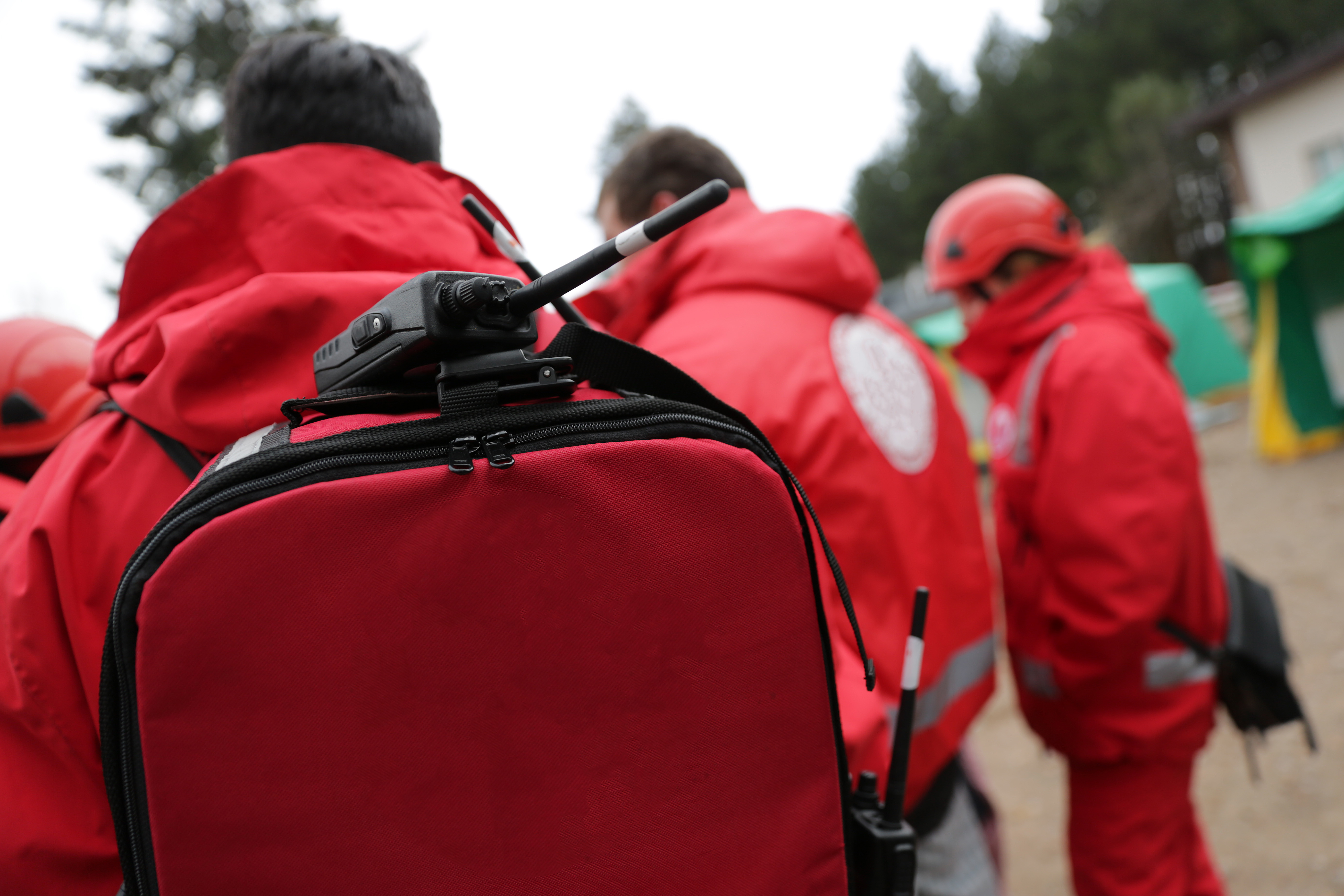
The Importance of Crisis Communication in Disaster Response
Effective communication is a critical tool for disaster service workers. Clear, accurate, and timely messaging can mean the difference between life and death, chaos and order. Crisis communication is essential for keeping communities informed and guiding them through disaster situations. By providing vital information to the public, disaster service workers can help coordinate efforts, save lives, and reduce the suffering of affected individuals.
Disaster service workers are integral to disaster response and recovery. Whether it’s responding to emergencies, rebuilding communities, or providing mental health support, their dedication and efforts are essential in times of crisis.
“Crisis communication is essential for keeping communities informed and guiding them through disaster situations.”
What is Crisis Communication?
Crisis communication refers to the process of delivering crucial information during emergencies, ensuring that those affected by disasters are informed and equipped to take the necessary actions to protect themselves and others. This type of communication serves to guide disaster service workers and inform the public, with the primary goal of minimizing confusion, reducing fear, and facilitating effective response efforts. Crisis communication is vital in disaster management, helping to coordinate efforts and ensure safety during chaotic events.
There are three main types of communication during a crisis: informational, operational, and motivational.
- Informational Communication: This involves sharing essential facts and data. During a disaster, public safety, shelter locations, road closures, and the status of emergency services are examples of crucial information that needs to be disseminated to the public to ensure safety.
- Operational Communication: Operational communication is directed toward the internal coordination of disaster service workers and agencies. It ensures that all responders are informed about their tasks, available resources, and the locations where their assistance is most needed. This communication helps streamline response efforts and reduce confusion among agencies.
-
Motivational Communication: Motivational communication aims to encourage cooperation and compliance. These messages are designed to reassure the public, maintain morale, and urge people to follow evacuation instructions or stay calm in the face of adversity. Motivational communication is essential for maintaining order during chaotic situations.
The Key Role of Communication in Disasters
Crisis communication plays a crucial role in several key areas of disaster response:
Coordinating Response Efforts
Clear and accurate communication is essential for disaster service workers when organizing and coordinating response efforts. In crisis situations, timely information ensures that all agencies and workers understand where to go, what to do, and how to act. Disaster service workers, including first responders, medical teams, and emergency management personnel, rely on crisis communication to stay informed about the evolving situation.
In large-scale disasters, agencies like FEMA, local authorities, and nonprofit organizations must coordinate efforts seamlessly. Without effective communication, efforts may be duplicated, or critical needs could be overlooked, slowing the response. Through crisis communication, disaster service workers can be directed to the most affected areas, and resources can be allocated efficiently.
Providing Information to the Public
Keeping the public informed during a crisis is critical. Disaster service workers and officials must provide clear instructions on what actions to take, such as evacuation routes, shelter locations, and safety precautions. These messages must be frequent and consistent, as conditions change rapidly during a disaster, and the public needs to remain up-to-date.
In addition to emergency notifications, updates about relief efforts, available assistance, and recovery plans must be communicated to reassure the affected population. Crisis communication also helps reduce panic, misinformation, and confusion that can arise when people are uncertain about their safety.
Maintaining Public Trust
Maintaining public trust is essential during a disaster. When people are scared and vulnerable, they rely on disaster service workers and authorities for guidance. Effective crisis communication builds trust and ensures cooperation. If the public perceives that the information they are receiving is clear, reliable, and timely, they are more likely to follow safety recommendations, evacuation orders, and relief efforts.
Conversely, poor communication, lack of transparency, or delays in vital information can result in confusion and fear, eroding trust in authorities. Misinformation and rumors, especially in the digital age, can spread rapidly. Through effective crisis communication, disaster service workers can counter these challenges and remain the trusted source of accurate information.


Crisis Communication Tools and Channels
Effective crisis communication relies on various communication tools and channels to reach the public and ensure swift dissemination of information. Each tool serves a different purpose, targeting diverse populations.
Traditional Media
Traditional media, such as television, radio, and news broadcasts, plays a vital role in crisis communication.
These platforms reach a broad audience, including those without internet access or who are not engaged with social media. TV and radio stations provide real-time updates on evacuation orders, shelter locations, and other essential information. Many local news outlets collaborate with government agencies to provide continuous updates during extended disasters.
Digital Media
Digital media has become an indispensable tool in crisis communication. Social media platforms like X, Facebook, and Instagram are used to disseminate updates, share emergency alerts, and counter misinformation. Disaster service workers use these platforms to communicate directly with affected communities, provide real-time updates, and answer questions.
Emergency apps and websites designed for disaster management also play a key role in providing people with access to essential information. For instance, FEMA’s mobile app provides disaster alerts, maps, and other resources to assist individuals during crises.
Direct Communication
In certain cases, direct communication with community leaders, local authorities, or even individual households may be necessary. This can be accomplished through text alerts, automated phone systems, or local leaders acting as liaisons between disaster service workers and the public. These methods ensure that people receive personalized messages, such as evacuation instructions or details on accessing resources like food and medical services.
Community leaders play a critical role in translating complex information into actionable steps, particularly in underserved or vulnerable populations. Text alerts and automated calls help communicate urgent information directly to individuals who may be isolated from other communication channels.
“When people are scared and vulnerable, they rely on disaster service workers and authorities for guidance. Effective crisis communication builds trust and ensures cooperation.”
How Crisis Communication Supports Disaster Service Workers
In times of disaster, whether caused by natural events or human actions, disaster service workers are the first responders. They provide life-saving assistance, ensure public safety, and help communities recover. Their success depends on exceptional coordination, resources, and communication. Effective crisis communication is essential for ensuring that disaster service workers can perform their duties efficiently and safely. It allows for the timely sharing of critical information, ensures the safety of responders, and fosters collaboration across multiple agencies. From pre-disaster preparations to post-crisis recovery, communication is integral in supporting disaster service workers.
Pre-Disaster Communication
Training and Preparedness
Crisis communication begins long before a disaster strikes. Disaster service workers must undergo thorough training in communication protocols and tools to ensure they can manage emergencies effectively. This training covers communication systems, the roles of various responders, and the use of specific channels during a crisis. Whether using radio systems, emergency alerts, or mobile apps, disaster service workers need to be proficient in these tools to ensure smooth operations.
Moreover, training in crisis communication involves preparing disaster service workers to share vital information under pressure.

It includes issuing clear, concise instructions, coordinating with other agencies, and reporting progress effectively. Without this training, workers may struggle with delivering accurate information, which could lead to confusion or delays that undermine the response.
Scenario-Based Drills
One of the best ways to prepare disaster service workers for real-world crises is through scenario-based drills and simulations. These exercises simulate actual disaster situations, allowing workers to practice communication in high-stress environments. For example, mock evacuation drills help responders learn how to communicate with the public, other responders, and local authorities in real time.
Through these drills, disaster service workers hone their ability to manage information flow during emergencies. They also become adept at using emergency communication tools and refining strategies for keeping the public informed. These exercises ensure that disaster service workers are ready for any crisis that may arise:
During the Crisis
Real-Time Information Flow
The most critical role of crisis communication during a disaster is the ability to provide real-time updates to disaster service workers. Disasters evolve quickly, with shifting weather patterns, emerging hazards, or new evacuation zones. It's crucial that disaster service workers receive up-to-date information so they can adjust plans accordingly. For instance, if a wildfire changes direction, emergency responders need immediate updates to reroute evacuations or reallocate resources.
Additionally, real-time communication systems prevent disasters from worsening by keeping disaster service workers informed of dangers like rising floodwaters or structural damage. By staying updated, workers can respond more effectively, anticipate risks, and minimize community impact.
Maintaining Worker Safety
Crisis communication is not only about informing the public, it’s also about safeguarding disaster service workers. Communication systems alert responders to potential hazards they may encounter on the job. This includes notifying them of unsafe areas, hazardous materials, or changing conditions that could jeopardize their safety. For instance, if aftershocks are likely following an earthquake, disaster service workers receive alerts to exercise caution when entering buildings.
Real-time safety updates ensure that disaster service workers are informed of risks, enabling them to make informed decisions about where to work, when to seek cover, and how to prioritize their own safety. This system significantly reduces injuries or fatalities among first responders.

Coordination Among Multiple Agencies
Disasters often require the collaboration of multiple agencies at federal, state, and local levels, along with nonprofit and volunteer organizations. Effective crisis communication ensures these diverse groups coordinate seamlessly. For example, communication systems connect emergency medical personnel, law enforcement, local governments, and relief organizations, allowing resources to be allocated effectively, evacuation plans to be synchronized, and critical infrastructure to be prioritized.
Without proper communication, confusion can arise, leading to delays and duplicated efforts. Crisis communication ensures that all parties involved in disaster response are aligned, working toward the shared goal of saving lives and restoring order.
Post-Disaster Communication
De-briefing and Feedback
Crisis communication doesn’t end once the immediate danger subsides. Post-disaster debriefings and feedback are critical for evaluating and improving communication efforts. Disaster service workers must share their experiences, discussing what worked well and what could be improved. These discussions help identify gaps in communication and refine strategies for future crises.
After-action reports and debriefings provide insights into how communication systems were utilized and whether any obstacles hindered the information flow. For example, were certain agencies unable to access communication systems? Was the message clarity sufficient? This feedback informs improvements in training and operational protocols for future disaster responses.
Restoring Confidence and Morale
Disaster service workers often face intense emotional and physical strain during their work. After responding to a large-scale disaster, they may feel exhausted, overwhelmed, or demoralized. Crisis communication can help restore morale by offering positive reinforcement, recognizing workers' efforts, and affirming that their work made a difference. Continued updates on recovery progress and the success of their efforts can keep responders motivated.
Crisis communication provides a channel for workers to express concerns, seek psychological support, and ensure they receive the assistance they need. Post-crisis communication may include offering mental health resources, conducting wellness checks, or providing opportunities for disaster service workers to share their experiences.
“Poor communication, lack of transparency, or delays in vital information can result in confusion and fear, eroding trust in authorities.”
Overcoming Communication Challenges for Disaster Service Workers
Backup Communication Systems
To mitigate the impact of technology failures, disaster service workers rely on backup communication systems that are less vulnerable to infrastructure damage. Satellite phones, two-way radios, and other portable communication tools provide a reliable means of staying connected, even in remote or hard-to-reach areas.
By utilizing these backup systems, disaster service workers can continue receiving real-time updates, sharing critical information, and coordinating their efforts. These alternative communication channels ensure a more efficient response to the crisis, even when traditional systems are down.
Cultural Competence in Crisis Communication
A key solution to overcoming communication challenges is developing cultural competence among disaster service workers. This involves training responders to effectively communicate with diverse communities, respecting their linguistic and cultural needs. By understanding the values, needs, and communication preferences of different groups, disaster service workers can craft messages that are both clear and culturally sensitive, ensuring they are more likely to be understood and acted upon.
Training in cultural competence also prepares disaster service workers to work with community leaders and translators to ensure accurate message delivery. In areas with significant immigrant populations, partnering with local organizations helps improve message accuracy and ensures it resonates with the community’s values and practices.
Combating Misinformation
Proactively combating misinformation is vital to ensuring the public receives accurate and trustworthy updates. Disaster service workers, along with government agencies and nonprofits, must consistently share reliable information through trusted communication channels. Regular updates on platforms like social media, traditional media, and emergency apps help counter misinformation and keep the public informed about evacuation plans, shelter locations, and safety measures.
One of the most effective ways to combat misinformation is by maintaining transparency and consistency. Clear, concise, and frequently updated messages build trust with the public and reduce the spread of rumors. Disaster service workers must also be trained to correct false information through official channels or engage with the community to clarify misunderstandings. By maintaining a unified and consistent message, disaster service workers can ensure the public stays informed and supports the ongoing response efforts.
The 4-11
As the world becomes increasingly reliant on digital media and real-time information, disaster service workers must continually adapt to new communication tools and platforms. By embracing technology, they can ensure that no individual is left behind during a crisis, ensuring that all affected parties receive the necessary support and guidance. Crisis communication enables disaster service workers to maintain situational awareness, manage resources, and respond effectively to the demands of an emergency. Timely, accurate, and transparent information is key to allowing these workers to coordinate efforts, manage emergencies, and keep the public informed and safe. From managing first responders to providing updates on evacuation plans and safety measures, crisis communication is a critical tool that supports disaster service workers in navigating the complexities of disaster situations.
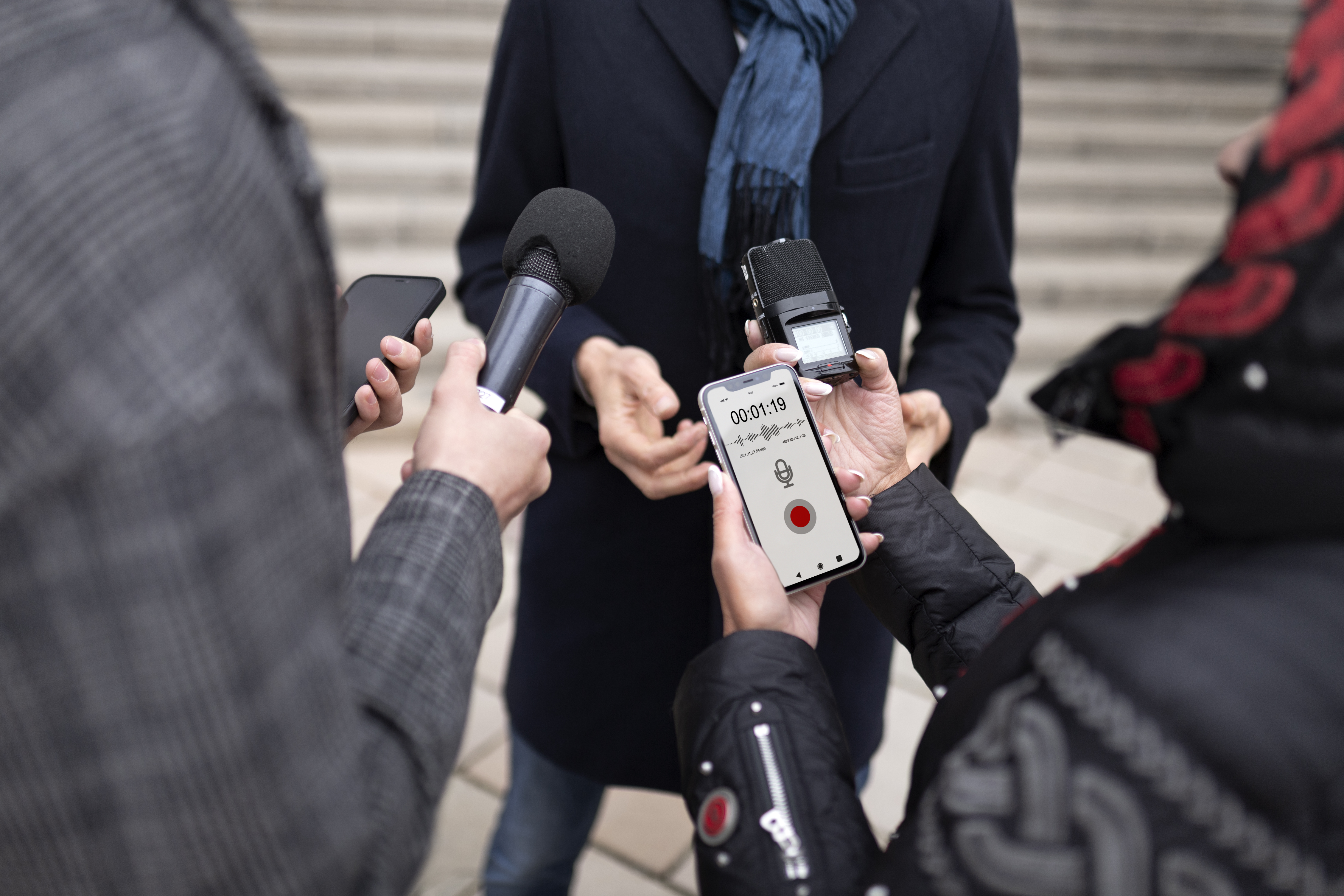


About the Author
Mark Linderman is the owner of Disaster Initiatives, an online company that provides communication leaders with the tools needed to address their communities and the media throughout a crisis, and teaches the communicator to approach crisis communication from the listener’s perspective. He is a Certified Emergency Manager (CEM) and nineteen-year veteran of Public Health. He instructs Crisis & Risk Communication within the field of disaster preparedness for seven universities, including Indiana University’s Fairbanks School of Public Health. Mark is considered a Subject Matter Expert in the field of disaster-based communication and is a widely received public speaker and advocate for disaster preparedness.
Mark Linderman,
MSM, CEM, CCPH, CSSS
Visit DISASTER INITIATIVES for more information
